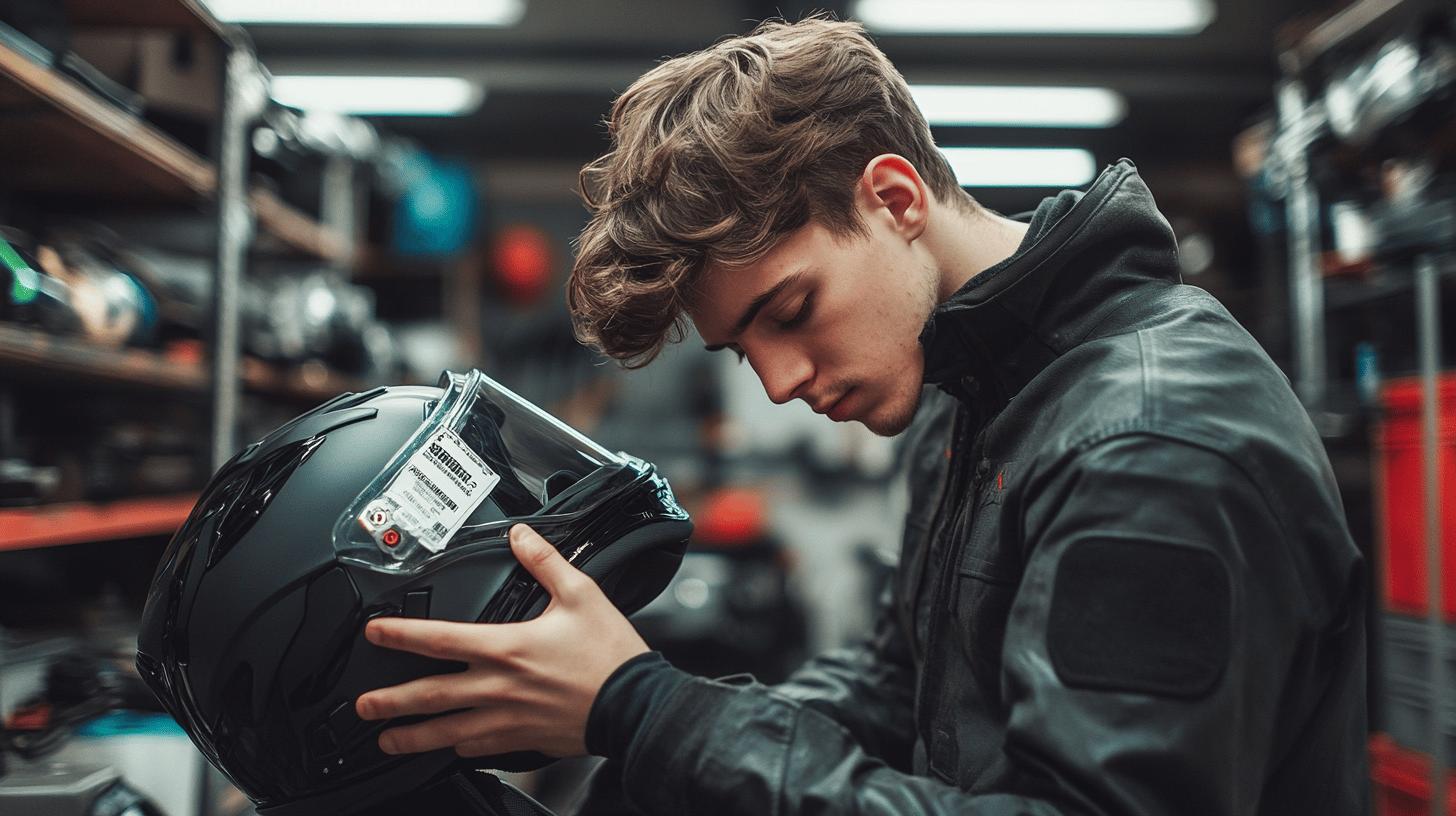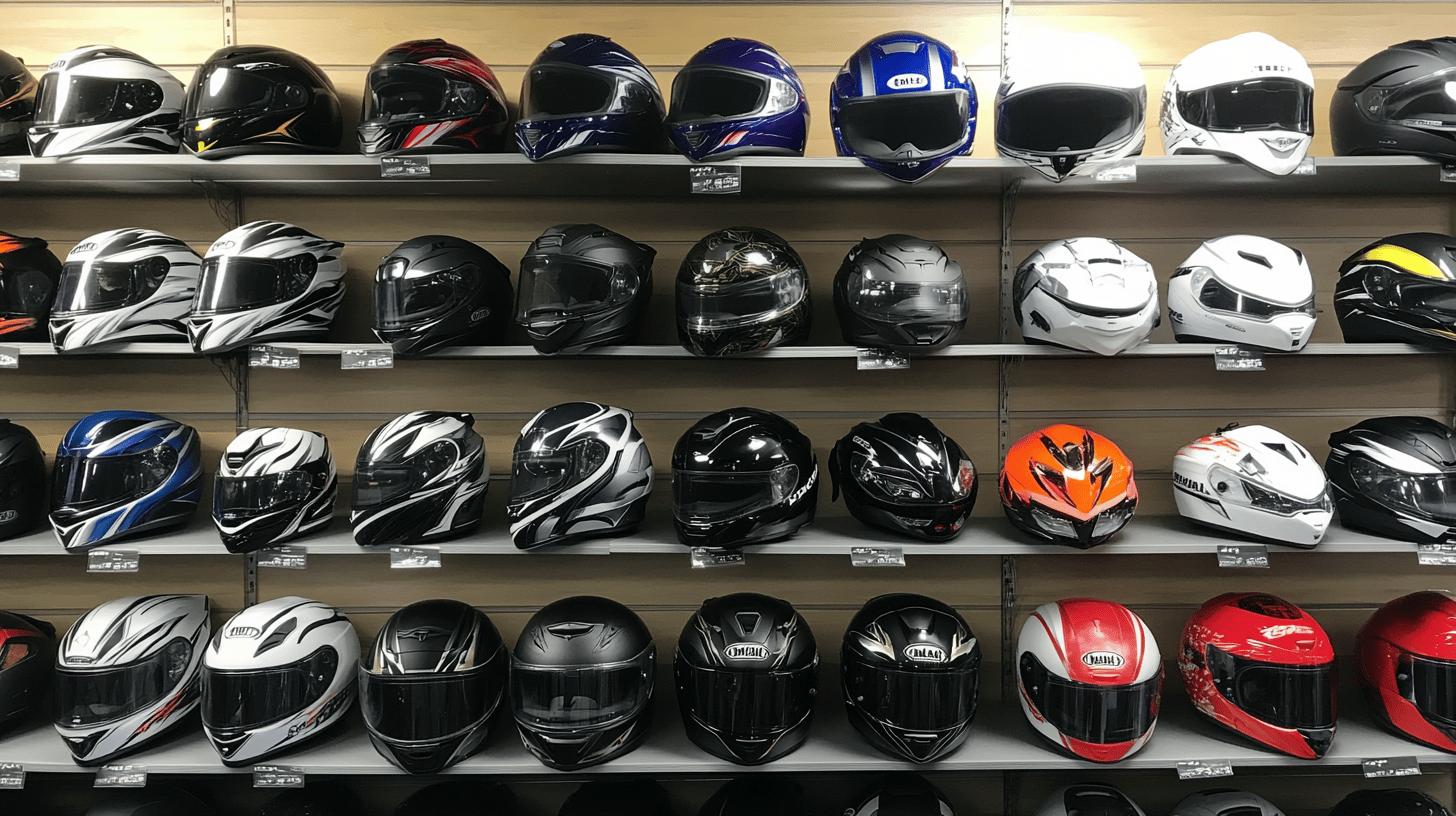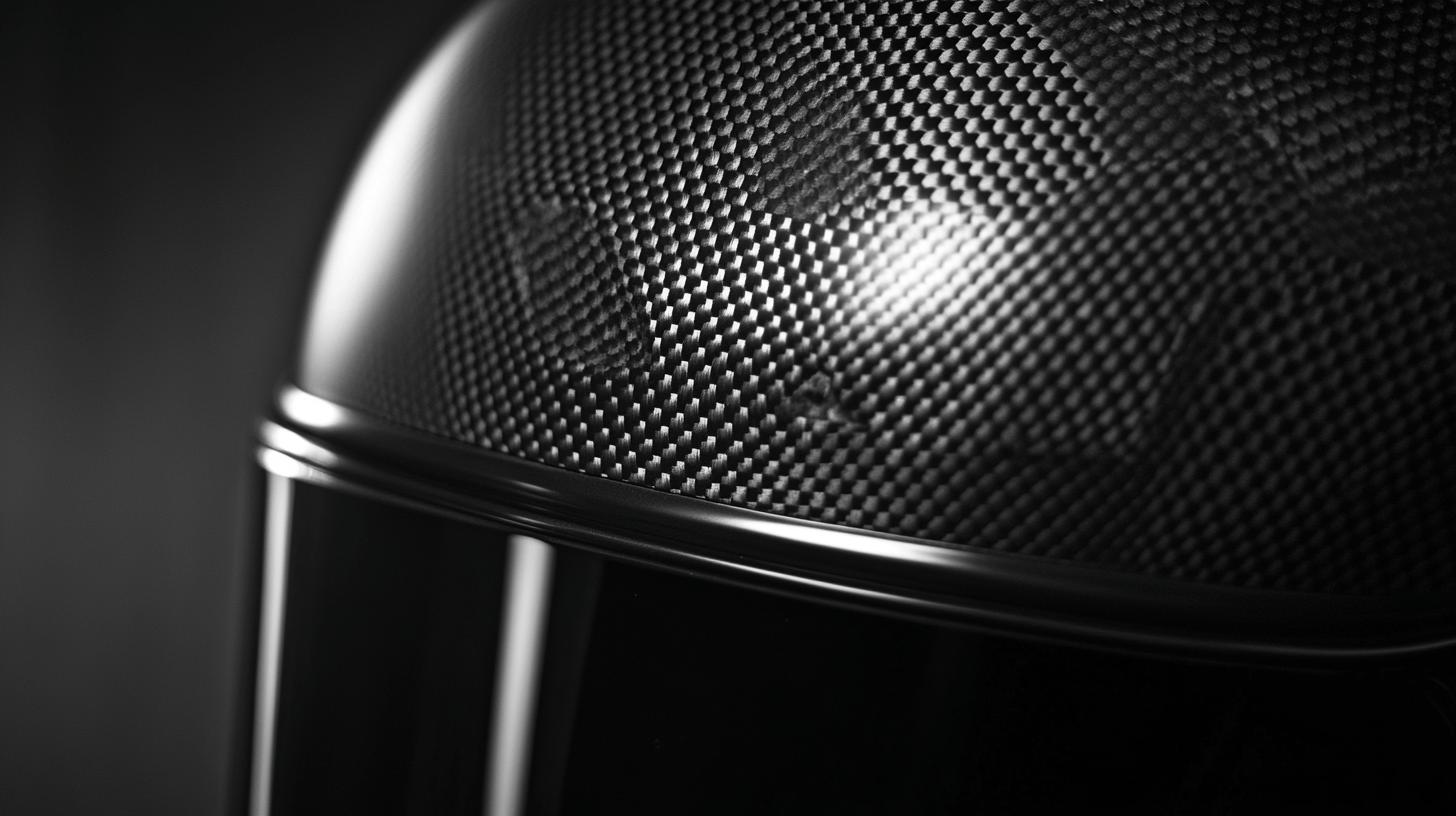Are you aware that a helmet alone can influence your survival in a motorcycle crash by approximately 37%? In motorcycle safety, the helmet is arguably the most critical piece of gear, but not all helmets are created equal.
Understanding motorcycle helmet standards like DOT, Snell, and ECE is crucial to ensure your helmet meets rigorous safety criteria.
This article delves into these certifications, types of helmets, materials used, fitting tips, and proper maintenance, thus empowering you to choose a helmet that not only fits your style but also enhances your safety on every ride.
Understanding Motorcycle Helmet Safety Standards

Helmet safety standards serve a critical role in ensuring the protection of riders. They establish minimum safety requirements that helmets must meet to be deemed safe for use.
These standards ensure helmets can withstand impacts, provide adequate coverage, and protect against penetration. Compliance with these standards is crucial for rider safety, as it indicates that the helmet has passed rigorous testing.
DOT, Snell, and ECE certifications are prominent safety standards that vary slightly in their testing procedures. The Department of Transportation (DOT) certification is mandatory in the U.S. and focuses on impact absorption and penetration resistance. Snell certification is voluntary and is known for its stringent testing, including rotational impact resistance.
In the UK and Europe, helmets must comply with the ECE 22.06 standard, which includes tests for impact, abrasion, and retention system performance. Each of these certifications provides a level of assurance that the helmet can protect the rider in various crash scenarios.
| Certification | Countries Applicable | Key Features |
|---|---|---|
| DOT | U.S. | Impact absorption, penetration resistance |
| Snell | U.S. (Voluntary) | Stringent testing, rotational impact resistance |
| ECE 22.06 | UK, Europe | Impact, abrasion, retention system performance |
When purchasing a helmet, it is essential to verify its certification to ensure it meets the necessary safety standards. Checking for certification labels, such as DOT, Snell, or ECE, is a straightforward way to confirm compliance. This verification step can significantly enhance rider safety by ensuring that the helmet has been properly tested and approved.
Types of Motorcycle Helmets and Their Features

Motorcycle helmets come in a variety of styles, catering to different riding needs and preferences. The main types include full-face, modular, dual-sport, open-face, half face, and off-road helmets. Each type offers distinct features and levels of protection, making it crucial for riders to choose the one that best suits their riding environment and safety requirements.
| Helmet Type | Protection Level | Key Features | Ideal For | Drawbacks |
|---|---|---|---|---|
| Full-Face Helmet | Highest | Covers entire head, including chin and jaw; robust outer shell, impact-absorbing liner, anti-fog visor, ventilation | High-speed riding, highway, and urban riding | Heavier, can feel warm in hot weather |
| Modular Helmet | High, but slightly less than full-face | Flip-up front section, combining full-face protection with open-face convenience | Touring riders, long-distance rides with stops | Heavier, hinge mechanism may reduce protection slightly |
| Dual-Sport Helmet | High for both on-road and off-road | Peak visor for sun protection, larger face shield, good ventilation | Adventure riders, mixed terrain | Heavier than off-road helmets, not as quiet |
| Open-Face Helmet | Medium | Covers sides, back of head; no chin protection; often includes a visor | City riders, low-speed riding | No chin protection, more exposure to debris |
| Half Helmet | Lowest | Covers only top of the head, minimal protection, very lightweight | Casual riders, slow-speed areas | Limited protection, no face or chin coverage |
| Off-Road Helmet | High for off-road impacts, not ideal for highway | Lightweight, designed for ventilation, peak visor for glare, enhanced chin protection but no face shield | Dirt biking, off-road riding | Not suitable for highway speeds, no face shield |
Full-Face Helmets
Full-face helmets provide the highest level of protection, covering the entire head, including the chin and jaw. This design is particularly effective in shielding against impacts, debris, and wind. Common features of full-face helmets include a robust outer shell, impact-absorbing liner, and a secure retention system.
Many models also offer ventilation systems to enhance airflow and reduce heat buildup, as well as anti-fog visors for clear visibility. These helmets are ideal for riders who prioritize maximum safety, whether they are riding on highways or in urban environments.
Modular Helmets
Modular helmets blend the safety of full-face helmets with the convenience of open-face designs. The front section can be flipped up, allowing riders to easily communicate or take a breather without removing the helmet entirely.
This feature is particularly beneficial for touring riders who make frequent stops. However, modular helmets tend to be heavier due to their hinge mechanisms and may carry a higher price tag. They also provide slightly less protection compared to full-face helmets since the front section is not as firmly secured.
Dual-Sport Helmets
Dual-sport helmets are designed for versatility, suitable for both on-road and off-road riding. They typically feature a peak visor to reduce sun glare and a larger face shield for enhanced visibility. Dual-sport helmets share characteristics with full-face helmets in terms of protection but are adapted for the demands of off-road conditions. They offer good ventilation and are often used by adventure riders who tackle varied terrains.
Choosing the right helmet style is a critical decision for any motorcyclist. The helmet should align with the rider’s specific needs, preferences, and the conditions they most frequently encounter. Prioritizing the correct fit and safety standards over aesthetics ensures optimal protection and comfort during every ride.
Open-Face Helmets
Open-face helmets, also known as 3/4 helmets, provide moderate protection, covering the sides and back of the head while leaving the face exposed. This design offers an open, breezy feel, making them popular among city riders who enjoy the sense of freedom and visibility.
While some models include visors to shield against wind and debris, open-face helmets do not provide chin protection, making them less safe for high-speed riding. These helmets are ideal for low-speed urban environments and short-distance rides where maximum protection is not essential.
Half Helmets
Half helmets, also known as “beanies,” offer minimal coverage, protecting only the top of the head. These helmets are extremely lightweight and provide the greatest airflow, which can be appealing to casual riders and those riding in hot climates.
However, the limited coverage means they lack protection for the face, jaw, and the back of the head, making them the least protective option available. Half helmets are generally suited for leisurely, low-speed riding, where a sense of openness is prioritized over full safety.
Off-Road Helmets
Off-road helmets, also known as motocross helmets, are built specifically for dirt biking and trail riding. They are lightweight and feature extended chin protection and enhanced ventilation, which are crucial for handling the rigors of off-road conditions. Off-road helmets also typically include a peak visor to protect against sun glare and roost (debris kicked up by other riders).
These helmets are designed to be worn with goggles instead of a face shield, providing excellent airflow but less noise isolation. Off-road helmets are ideal for riders tackling rugged trails and dirt tracks, although they are not recommended for highway use due to their specialized design.
Materials and Construction of Motorcycle Helmets

Motorcycle helmets are crafted using various materials, each chosen for its specific properties to enhance safety and comfort. The outer shell, a crucial component, is typically made from materials like carbon fiber, fiberglass, or polycarbonate.
Carbon fiber is celebrated for its exceptional strength-to-weight ratio, providing durability without adding unnecessary heft. Fiberglass offers a balance between strength and flexibility, allowing it to absorb impact forces effectively.
Polycarbonate, often used in more affordable helmets, is known for its toughness and ability to withstand harsh conditions. These materials are meticulously chosen to ensure the helmet can resist penetration and disperse energy upon impact, safeguarding the rider’s head.
- Expanded Polystyrene (EPS): Known for its excellent energy absorption during impacts.
- Multi-density Foam: Offers varied levels of protection by using layers of different densities.
- Expanded Polypropylene (EPP): Provides durability and repeated impact resistance.
- Koroyd: Features a unique tubular structure for improved impact absorption.
- D3O: A smart material that hardens upon impact, providing dynamic protection.
The materials used in helmet construction significantly impact both safety and comfort. The outer shell materials, combined with advanced liner technologies, ensure that helmets can withstand various crash scenarios while minimizing the risk of injury.
These innovations in materials not only enhance protective capabilities but also contribute to the helmet’s overall comfort by reducing weight and improving fit. Properly constructed helmets ensure riders have peace of mind, knowing their safety gear is up to the task of protecting them on the road.
How to Ensure a Proper Helmet Fit

A proper helmet fit is paramount for both safety and comfort. A well-fitted motorcycle helmet should sit snugly on the head, particularly around the forehead, without causing discomfort or pressure points. This snug fit ensures the helmet remains securely in place during rides and potential impacts, reducing the risk of injury.
A helmet that fits correctly prevents excessive movement, which can compromise protection and lead to distractions while riding. Comfort is equally important, as a helmet that causes discomfort can deter the rider from wearing it consistently. Achieving the right fit involves understanding helmet sizing and shapes and recognizing that each brand may fit differently.
- Measure Head Circumference: Use a flexible measuring tape to measure the circumference of your head, about an inch above your eyebrows and ears.
- Consult Sizing Charts: Refer to the sizing chart provided by the helmet manufacturer, as sizes can vary between brands.
- Consider Head Shape: Determine whether your head shape is round, oval, or intermediate oval, as this affects which helmet models will fit best.
- Try On Helmets: Visit a store to try on different helmets. The helmet should feel snug without being too tight or causing discomfort.
- Check for Movement: With the helmet strapped on, shake your head side to side and up and down. The helmet should move with your head without excessive play.
Fitting a helmet is often a process of trial and error. It’s common to try on several helmets before finding one that feels right. Issues such as forehead pain or pressure points can indicate an improper fit, often due to a mismatch in helmet shape and size. Being mindful of these common fitting issues can guide you to a helmet that provides both safety and comfort on every ride.
Maintenance and Care for Your Motorcycle Helmet

Regular helmet maintenance is crucial for ensuring both the longevity and effectiveness of this essential safety gear. Over time, exposure to elements and wear can degrade helmet materials, potentially compromising their protective capabilities.
Proper care helps maintain the helmet’s structural integrity and functionality, ensuring it performs optimally in the event of an accident. A well-maintained helmet not only lasts longer but also provides consistent protection throughout its lifespan.
- Clean the Helmet Regularly: Use mild soap and warm water to clean the outer shell and interior padding. Avoid harsh chemicals that can weaken materials.
- Inspect for Damage: Regularly check for cracks, dents, or compromised areas on the helmet shell and liner.
- Store Properly: Keep the helmet in a cool, dry place away from direct sunlight to prevent UV damage and material degradation.
- Replace Worn Parts: Swap out worn or damaged components like visors and padding to maintain comfort and safety.
- Avoid Dropping: Handle the helmet with care to prevent drops that can cause unseen structural damage.
Helmets should be replaced every five years from the purchase date or within seven years from the production date, whichever comes first. Key signs that indicate the need for a replacement include visible cracks, frayed straps, or a compromised fit due to liner compression. Regularly assessing these factors ensures the helmet continues to offer the protection riders need on the road.
Final Words
Navigating through helmet safety standards, one discerns the critical differences between DOT, Snell, and ECE certifications. Understanding these helps in making informed choices. Exploring various helmet types highlights the necessity of aligning the features with personal riding preferences. Materials like carbon fiber showcase innovations in safety and comfort.
A proper fit directly influences the effectiveness of a motorcycle helmet. Regular maintenance extends its lifespan. In sum, knowing what you should know about motorcycle helmets promotes a secure riding experience. Embrace this knowledge for a safer journey.
FAQ
Q: What are the main motorcycle helmet safety standards?
In the U.S., the Department of Transportation (DOT) and Snell set important safety standards for helmets. Europe’s Economic Commission for Europe (ECE) 22.06 applies primarily in the UK. These certifications indicate helmets meet rigorous safety requirements.
Q: How do DOT, Snell, and ECE helmet certifications differ?
DOT certification focuses on impact and retention tests crucial for U.S. road safety. Snell involves more rigorous testing scenarios. ECE 22.06 emphasizes comprehensive evaluation for European standards, including visor testing.
Q: Why is it necessary to verify helmet certifications?
Verifying helmet certifications assures compliance with safety standards, ensuring optimal protection during rides. Always check for certification labels when purchasing a helmet to confirm authenticity and safety.
Q: How do you choose a safe motorcycle helmet?
A safe helmet should have DOT, Snell, or ECE certifications indicating adherence to safety standards. It should fit snugly, provide full head protection, and feature quality materials such as carbon fiber or fiberglass.
Q: What are the three features a good helmet should have?
A good helmet should offer superior impact protection, a sturdy retention system, and DOT, Snell, or ECE certification, ensuring adherence to recognized safety standards for effective rider safety.
Q: What factors should be considered when choosing the right helmet?
Important factors include safety certifications, correct fit, helmet type suitable for riding style, material quality, and personal comfort. Prioritize full-face helmets for maximum protection, especially for higher-speed riding.
Q: What makes a motorcycle helmet good?
A quality motorcycle helmet features an impact-resistant outer shell, energy-absorbing liner, DOT or equivalent safety certification, and ergonomic design for comfort and fit.
Q: How can you find the best motorcycle helmet for an oval head shape?
To find the best helmet for an oval head, choose brands like Shoei or Arai, known for accommodating various head shapes. Ensure a snug fit without pressure points by trying different models.
Q: How do different helmet shapes vary by brand?
Helmet shapes differ among brands like Shoei, HJC, and Arai to accommodate various head contours, including round, oval, and intermediate oval, ensuring a comfortable and secure fit for all riders.

Mark Anderson is a trusted expert with over 25 years of riding experience. At 56, his deep knowledge of long-distance touring and participation in major motorcycle rallies makes him a reliable source for gear recommendations on ProtectiveGearz. Mark’s decades of firsthand experience ensure his advice is authoritative and valuable to riders seeking expert guidance.



